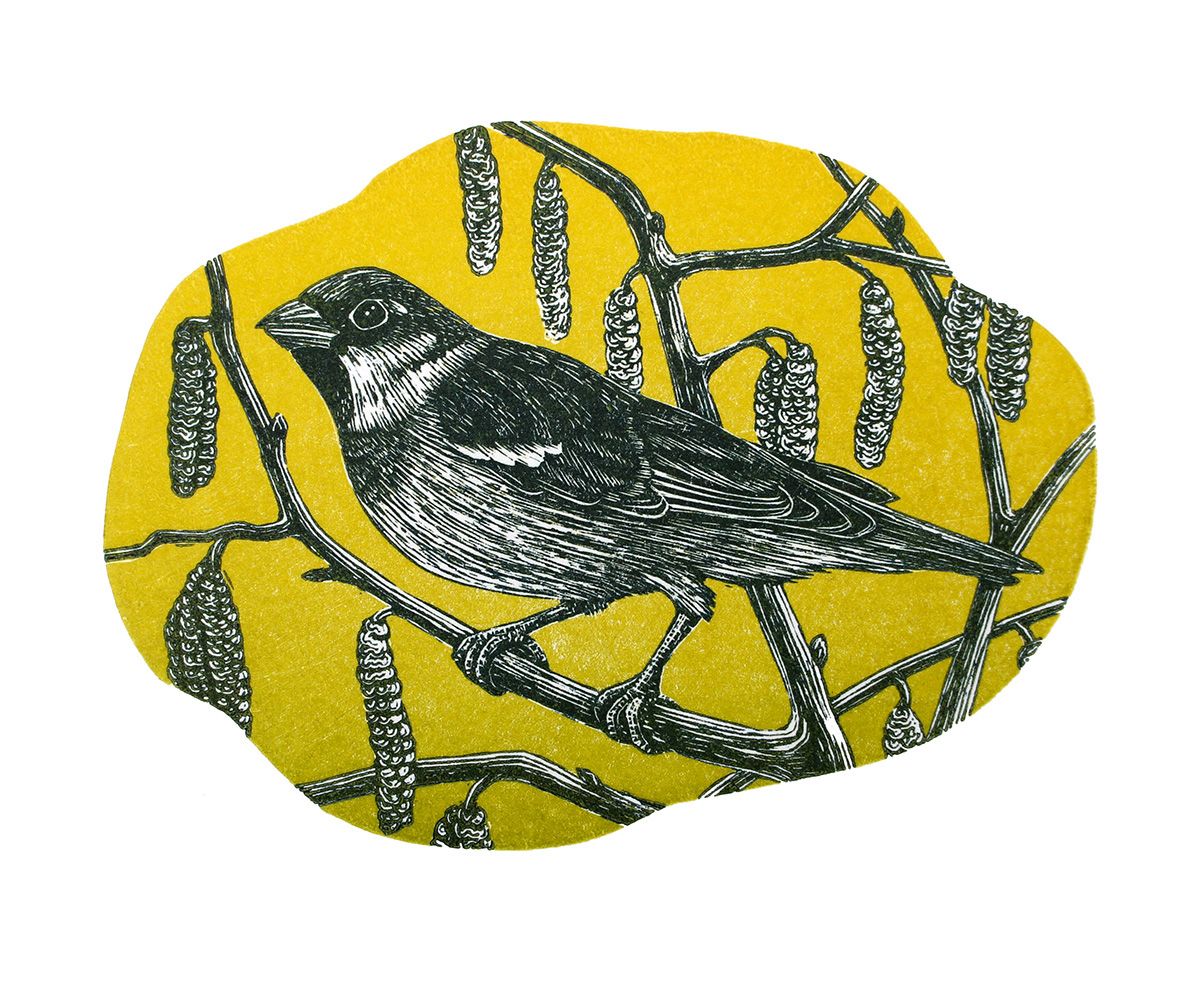The lyrics “With soft whispers laden the leaves rustle o’er me / The ash grove, the ash grove alone is my home” and the melancholy tune of ‘The Ash Grove’, so sweetly sung by a joyful barefooted woman in her seventies, planted the seed of what has become the Hedgesong Collective.
‘The Ash Grove’ was translated from ‘Llwyn Onn’, a traditional Welsh folk song, which tells of finding comfort in ash trees while mourning a lover. The ash – a beautiful, useful tree and, according to the Woodland Trust, the third most common in Britain – is under threat from the highly infectious fungal disease ash dieback. This historic tree may soon disappear from our landscape and be unknown to future generations. Songs such as ‘The Ash Grove’ allow us to celebrate the species now and to commemorate it later.
The Hedgesong Collective, an open-ended and participatory project, was born out of a shared love of trees and song. We both recognise the power of song to build communities and be a vehicle for knowledge and celebration. As we reckon with a future of potential ecological collapse, we believe that bringing songs about trees into community spaces could help people re-establish emotional, practical and spiritual connections to their environment.
We are particularly interested in collecting and sharing traditional songs that uncover old knowledge already preserved by our ancestors. As our combined ancestry is rooted in the British Isles and the project is based here, this is our starting point when looking for traditional folk songs featuring trees.
We have learnt that, in general, forests are of great importance in these songs. They are places in which lovers meet, court, kill each other; women are frequently coerced here; mythic creatures are encountered and often trick or impregnate village folk; people go poaching and gathering, and escape and shelter from persecutors. The woods hold historic moments in their great stillness. For hundreds of years, we have sensed our place in them, and our enduring longing to be held and supported by the trees is evident in the longevity of the songs.
That said, it seems that, more often than not, the trees and plants in traditional songs serve as scene-setters. The number of songs focused on the celebration of individual tree species is minimal compared with those mentioned in only a line or two. While initially frustrating, this reminded us that the songs are tied to the plants as human beings are tied to the land. As we go about our everyday business, our trials and tribulations and our joys, the surrounding flora are omnipresent, often having a subtle yet potent voice in the story.
We are curious about old, enduring wisdom embedded like weeds in the lyrics of these songs – medicinal plant lore, customs and superstitions, old connections between things that might be unknown to us. For example, what is the connection between the oak, the sweet violets and the old crow in the traditional song ‘In Yonder Old Oak’? Looking at the wider plant world, which we would like to incorporate as the project develops, the song ‘Let No Man Steal Your Thyme’ covers a great deal of herb and tree symbolism in its message of caution – even hinting at plants with abortive properties. One wonders if this could have even been an under-the-radar transmission of women’s traditional herbal knowledge. These songs offer perspectives on our ancestors’ daily lives, infused with the presence and mythos of the land.
We can glean practical knowledge from them, too. For example, ‘Logs to Burn’, thought to be based on a woodseller’s street cry, gives us a guide to the burn characteristics of many different types of wood. A more recent folk song, ‘Oak and Ash and Thorn’, adapted from a Rudyard Kipling poem by Peter Bellamy, and recorded in 1970, tells us about the uses of various trees, such as yews for bows, and beech for cups.
Currently in the collecting stage of the project, we are advertising for anyone who knows a song about or featuring a tree to become a part of this collective song and knowledge pool. We welcome the sharing of contemporary as well as traditional songs, honouring modern compositions as part of the living, breathing folk tradition. Thomas Calladine, a Bristol-based musician, recently shared a song he wrote about the 500-year-old Whiteleaved Oak on Raggedstone Hill in Herefordshire, a renowned tree of pilgrimage, which burned down in 2020. In writing such songs, we document our relationships to trees today.
We find that, as with ‘Oak and Ash and Thorn’, some traditional songs may benefit from new life blown through them in terms of structure and melody, to make them as memorable and accessible as possible. We try to find versions of songs that are easy to sing in groups and have the durability to spread across communities of their own accord. This is in the nature of folk songs, constantly shifting and evolving as they are passed from singer to singer.
Our aim is to share these songs in a multitude of contexts, holding workshops and singing walks in which we can teach tree songs alongside folklore and ecology. We hope that these can be collaborative spaces, in which participants can also contribute to the knowledge shared. As arts facilitators, our shared interest is in open collaborative projects that root communities in their folk history and offer direct experiences of their land. Trees can be found in most habitats in the UK and are symbols of Nature even in densely populated places such as cities. Almost everyone will see at least one tree every day. They might not know what species it is, or spend time thinking about it, but trees offer an opportunity for us to connect; they can be a gateway to the rest of Nature.
Having experienced symptoms of burnout from hard-hitting environmental campaigning, Emily recognises the value in bringing nourishing forms of creativity into activism. Passionate about joy as a moving force for positive change, she began to understand the benefits of singing when she worked as a wellbeing assistant in a residential home. Moved by the vulnerability of a volunteer singing ‘The Ash Grove’, Emily led singing groups of up to 30 elderly residents. While she could easily witness the elevation of the group, over time she also noticed changes in herself. She found she was more in control of her voice, which improved her asthma, as well as giving her an enhanced feeling of being grounded within herself. She found that her anxiety was reduced, and she was better able to connect with others.
Creative spaces that centre upon themes of play, sharing and connection offer a vision of hope, recuperation and reimagining. Like trees in a woodland, we each have our skill set to offer to the community and wider environment. The hawthorn, a slow-growing shrub-like tree, has just as much to offer as the tall and fast-growing canopy coverers. This is as applicable in activism as it is to our everyday lives. All types of people, whatever their skills, have an essential role to play in envisioning and shaping the future.
In spending time with trees, learning their names, their characteristics and folk history, we bring our ‘human world’ closer to theirs. We create space in our consciousness for slow-growing foliage, creeping vines, green arms reaching towards the sky. We need opportunities to drop into knowing and feeling this vibrant, living world in which we are embedded, and songs have the potential to be potent doorways into this space.
The Hedgesong Collective hosted its debut woodland singing workshop at the Landworkers’ Alliance’s Land Skills Fair this summer. We have recently been awarded a small funding opportunity from the Creature Conserve arts and ecology programme, and welcome further opportunities to grow the project. Among our plans are an illustrated songbook, an ‘Ash Pilgrimage’ involving song, folklore, and crafts, and hosted workshops in a wide variety of community settings. As an open resource, we encourage others to share these songs with their own communities.
This article will be the focus of the Readers’ Group discussion on 20 November 2023, 7–8pm. More information and tickets.







